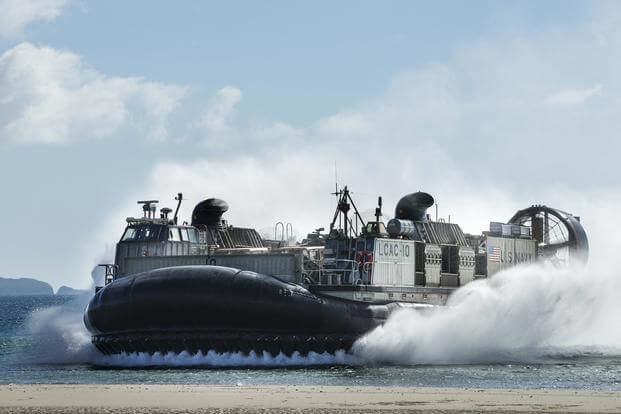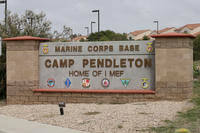The commandant of the Marine Corps said Wednesday he sees the future fight looking like the World War II campaign to secure Guadalcanal.
That six-month campaign began with Marines launching a surprise attack in August 1942 to capture and control an air base under construction.
Reinforcements from the U.S. Army and National Guard were funneled to the island amid a series of land and sea fights.
"The idea of the expeditionary advance base ... is something that we are looking at really hard; maybe not just one location but multiple locations," Gen. Robert Neller told an audience at Modern Day Marine 2017, describing Littoral Operations in a Contested Environment.
"We want to position ourselves to control key maritime terrain," he said. But such an undertaking is not going to be easy.
"This is a high-end fight. This is not going to be an easy fight," Neller said. "Let's face it, we haven't faced an adversary that has had long-range precision capabilities for many years -- a peer."
Complementing Navy Operations
Another challenge will be to ensure that the Marine air-ground task force is complementary to Navy operations.
"There is always a question of who is in charge, who has the main effort, how much is too much and how do we do this," Neller said. "We are going to have to get past all that.
"In World War II, it was very simple -- the Navy officer was in charge. And certainly when we are transiting the sea space to get to the fight, that is the way it's got to be because that is what they do," he said. "Their job is to control the sea, deny the enemy's movement, and our job as Marines is going to be to help them."
In a couple of weeks, Marines will participate in an exercise in North Carolina known as Bold Alligator, Neller said. These types of exercises "are places that we come together with our allies and figure out how are we going to work these concepts."
"We are going to have to exercise, we are going to have to experiment, and we are going to have to figure out what works and what doesn't," he said.
"You are going to see precision fires delivered off of amphib ships, whether they come off tubes, guns or rockets or delivered from unmanned systems," he added.
Getting Marines Ashore
Different ways of getting ashore will also be a key focus in the future, Neller said.
"You are going to see more high-speed vehicles, more autonomy," he said. "We know we can operate just about anything that we own regardless whether it's in the air, on the sea or under the sea without human beings.
"We know we can do that now. The question is when to do it to where it makes sense, where does it give us advantage and where does it not," he continued.
Speaking to the defense industry, Neller said part of the shortfall is connector vessels that allow troops to move ashore.
"You are going to have to move on the surface, whether it is air-cushion vehicles or it's traditional landing craft or some other means autonomously operated or operated by human beings," he said.
This does not mean creating huge piles of logistics on shore that can be easily targeted, Neller said, "but use the sea to move in and out of a maneuver area as we need to ... that's an area we are going to pay close attention to."
Using the Sea as Maneuver Space
The concept of Littoral Operations in a Contested Environment uses the sea as maneuver space to "give us the edge to maneuver away from the threat and come in at the appropriate time after we have set conditions," he said.
"We have no illusions or delusions of how this is going to be easy, that we are just going to land without any adversary contesting us," Neller said.
The future conflict may start in the cyber domain, denying communications and other capabilities, he said.
"At some point -- at much, much longer ranges than we are used to -- there is going to be kinetics involved," Neller said. "I'm not saying we are looking for a fight, but we certainly have to be prepared for one."
-- Matthew Cox can be reached at matthew.cox@military.com.
























